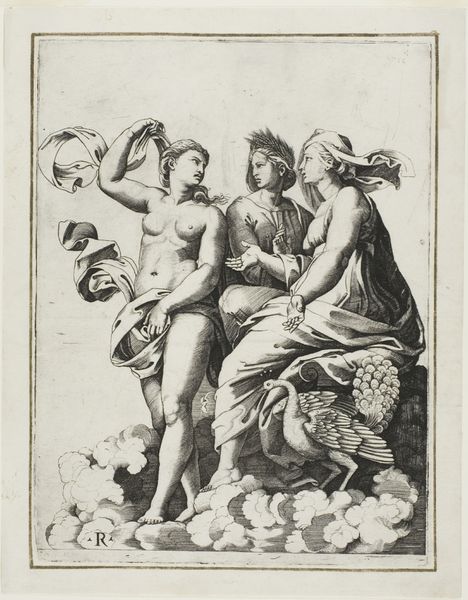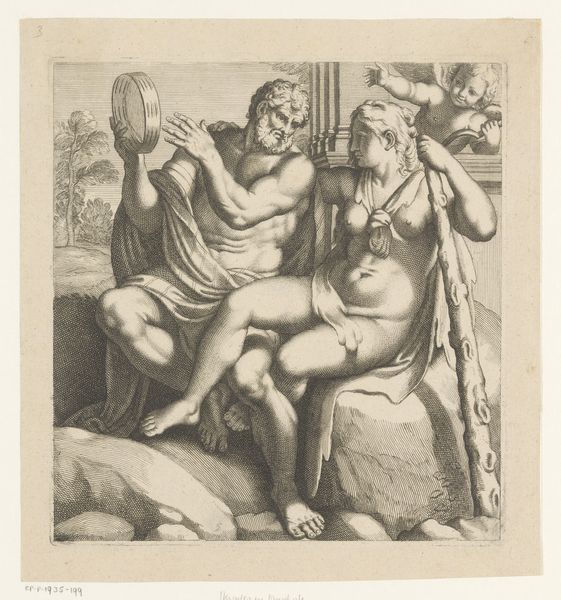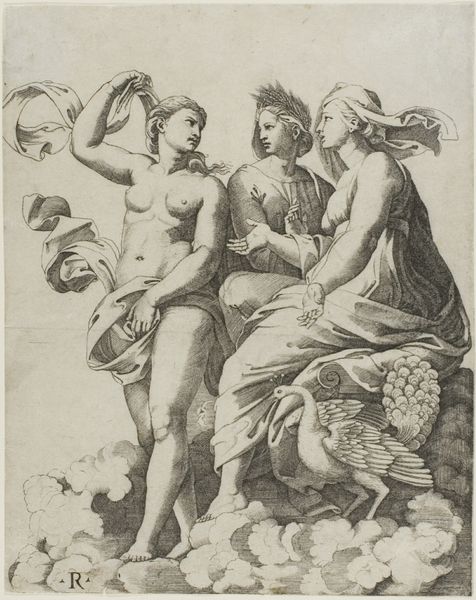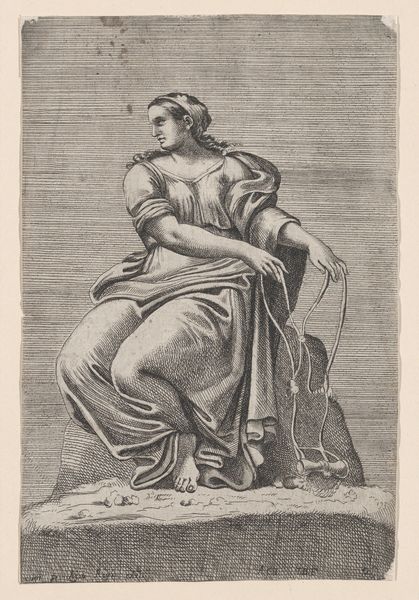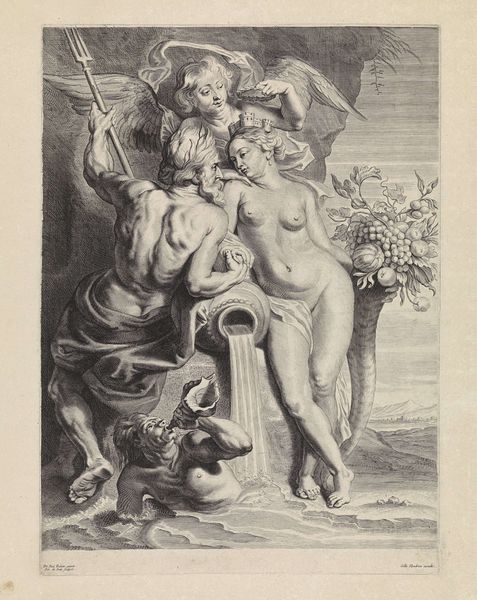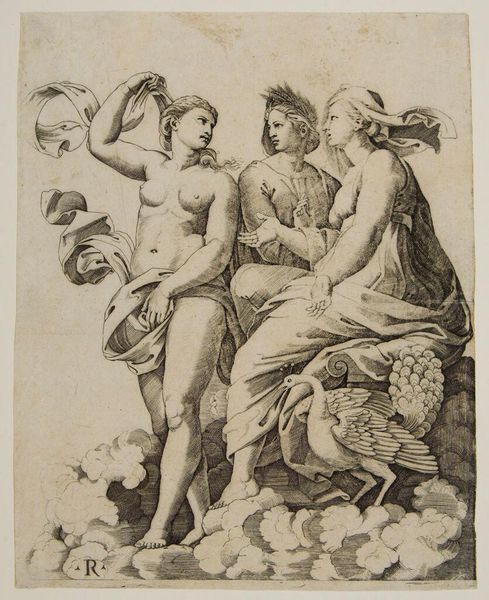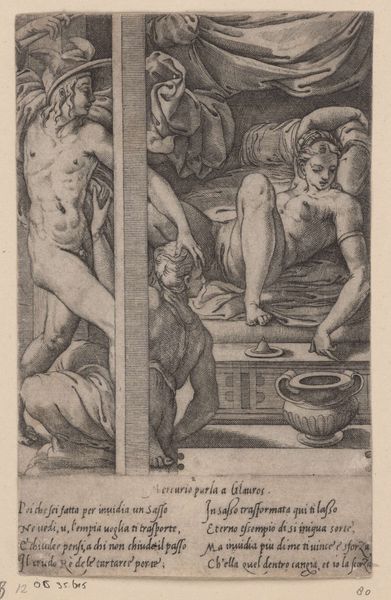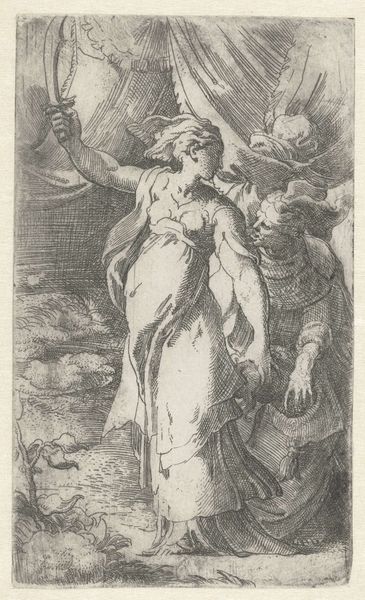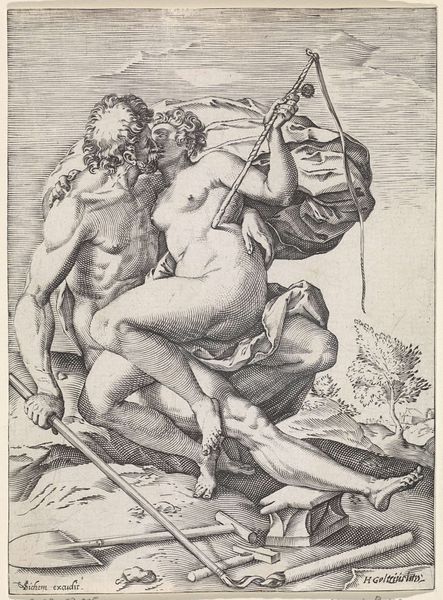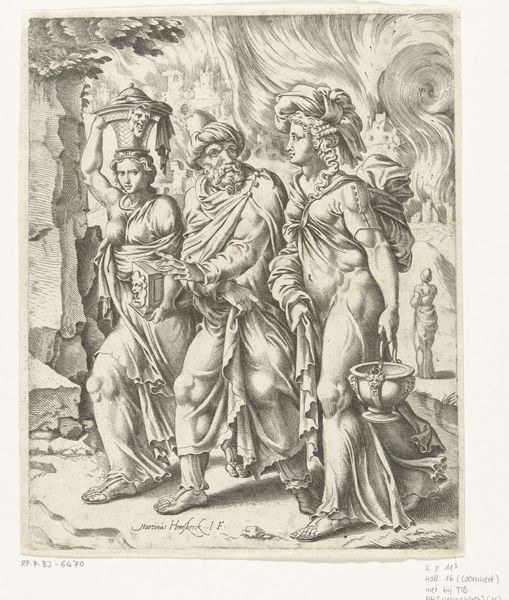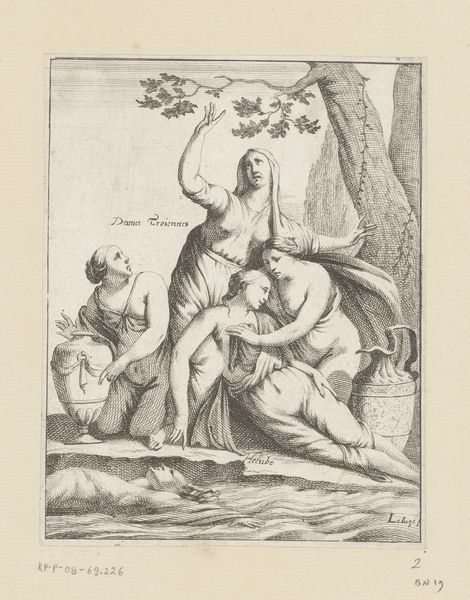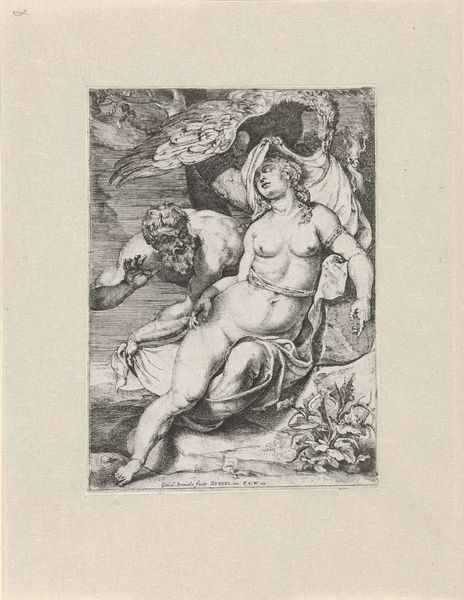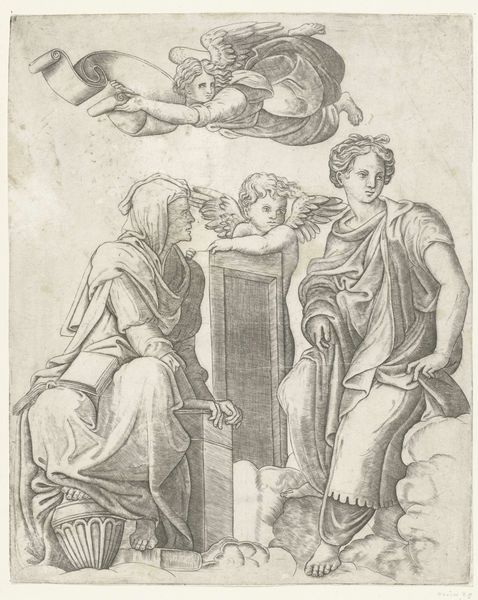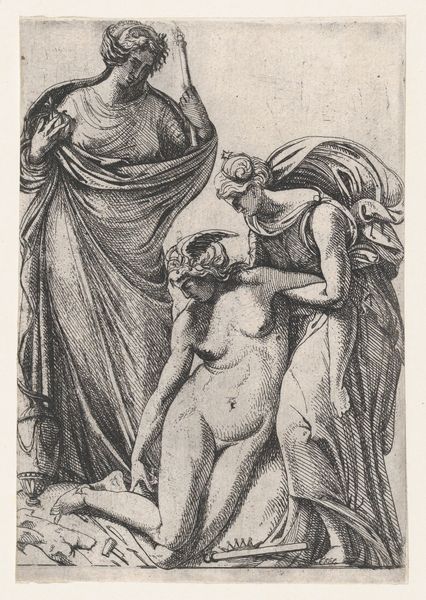
etching
#
baroque
#
etching
#
figuration
#
genre-painting
#
nude
Dimensions: height 242 mm, width 182 mm
Copyright: Rijks Museum: Open Domain
Curator: Before us, we have an etching from between 1630 and 1706, held here at the Rijksmuseum. The piece is titled "Two Young Women by a Spring," and its creator remains anonymous. Editor: There’s a serene, almost melancholic feel to it. The lines are delicate, and the contrast gives it a classical sculptural quality. It reminds me of nymphs or deities in repose. Curator: That classical feel aligns well with the Baroque style that's tagged to the artwork. While not explicitly stated, etchings like these often circulated within educated circles, sometimes as illustrations for literary or scholarly works. Notice how the nude figure adheres to specific canons of beauty that prevailed at that time. Editor: Absolutely. The spring, the figures… Water is such a potent symbol – purity, life, but also the subconscious. That large vessel from which water is poured reinforces these notions; there are allusions here of renewal and feminine power that ripple into the future and through history. Curator: Indeed, and to me, their lack of adornment is a striking decision by the artist, particularly during the Baroque period, characterized as it was by ostentation and theatricality. Perhaps a conscious commentary on artifice versus the natural form? This particular piece may challenge preconceived notions and explore natural beauty, rather than subscribing to mainstream aesthetics during the Baroque age. Editor: I'd agree with that analysis and note that, as a depiction of femininity, this image is full of nuance, blending classical allusion with subtle explorations of genre. The anonymous status of the artist perhaps emphasizes the enduring symbolic weight, untethered to a specific name or reputation. It is, above all, a conversation. Curator: The themes within, certainly, make this small etching into a point of cultural reference across history, questioning conventional thought through a lens of beauty and serenity.
Comments
No comments
Be the first to comment and join the conversation on the ultimate creative platform.
